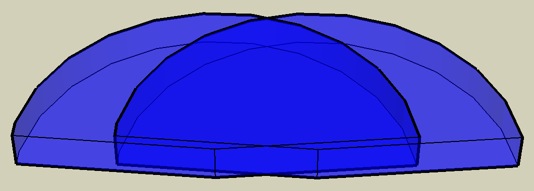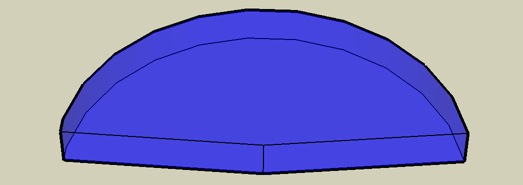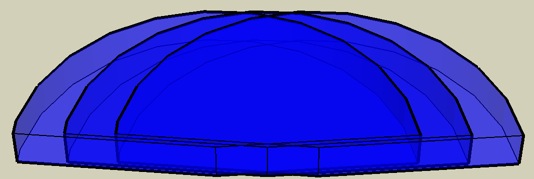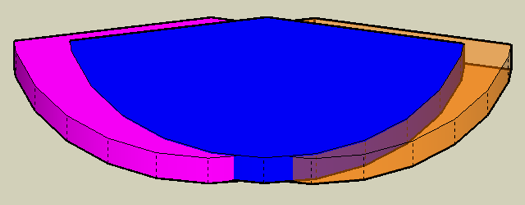Two L1®s in the Same Sound Field
Here are some rough sketches for discussion purposes. I believe that these are extremely conservative, and that your real-life performance will exceed what is suggested here. I just wanted to look at the relative performance between one L1™, and two.
The view is from behind the wall behind the L1™s.
Single L1® mono
Two L1®s twenty feet apart — dual-mono
The darker blue area represents the area where the two sound fields overlap.

This also suggests that if you were running stereo instead of dual-mono the stereo "sweet-spot" is going to be extremely wide. You don't have to be between the loudspeakers to hear both Left and Right channels.
Two L1™s with the original single L1™ field superimposed
The dark blue area shows the sound field of the original L1™. The lighter area shows the extra coverage you get by having two L1™s 20 feet apart as compared to a single L1™
The extra coverage you get with two L1™s spaced 20 feet apart, is about 10 feet on either side of the sound field of a single L1™.
- The view from the other side[/b]
(Still very conservative projections)
Blue is the coverage with one L1™. Purple and Orange is the extra coverage that you might get with two L1™s 20 feet apart.
Note: The sound field will does not stop abruptly as might be interpreted by the diagrams above. It should continue, fading off gradually, well beyond what is shown here . The purpose of these diagrams is to consider the relative advantages of having two L1™s in dual mono mode compared to a single L1™.


